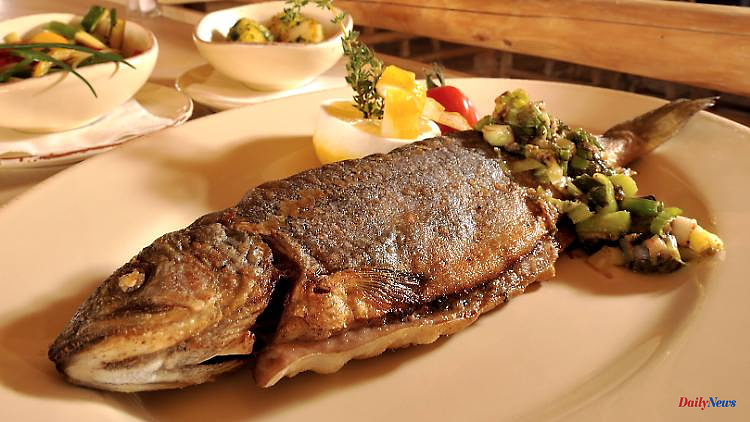Whitefish, whitefish, ash, rainbow trout - they are all related to the salmon and are an excellent substitute for the Germans' favorite fish. But our chef's favorite fish is another: the brook trout. Especially if it comes from local waters.
The salmon is the most popular fish in Germany. However, there is increasing reporting on salmon farming, which is generally considered to be rather unfriendly to the environment. The domestic alternatives are rarely discussed. In Germany, fish that are related to salmon grow wild or mostly in small farms. There is the whitefish in Lake Constance, the rainbow trout in the mountain rivers, then whitefish and ash trees. My favorite is the brook trout. All of these fish require clean, cold water. Breeding like salmon in sea water is not possible.
In the last 20 years, the water quality in small rivers has improved. Even in the Rhine there are fish like the lamprey, which was thought to be extinct around 1900. A Rhine fisherman recently reported to me that he had caught a sturgeon and of course released it immediately.
Today's recipe is very simple. We want to cook something light in midsummer, with as little effort as possible. Therefore I would like to introduce the brook trout on a vegetable patch. This is a recipe for two people as a brook trout weighs around 500 grams.
Rinse the fish well with cold water, not forgetting the inside. Pat the brook trout dry with paper towels. Cut off the caudal and dorsal fins with kitchen scissors. Rub the fish inside and out with sea salt and set aside. Cut the vegetables into thin strips, known as julienne. With root vegetables such as carrots, you can use the vegetable peeler to peel off fine slices, which can then be cut lengthwise particularly finely. Remove the stalk from the fennel and cut it against the grain. Cut the leek into five-centimetre pieces, cut in half and then cut lengthways into the julienne.
Preheat the oven to 140 degrees circulating air. Place two strips of baking paper of 50 centimeters on top of each other and spread melted butter in the middle. Pile the julienne on top of the butter. Open the char on the belly and drape it on the vegetable patch. Sprinkle with lemon juice and cover with knobs of butter.
Fold the parchment paper so that the char is wrapped in a package. Place in an oven dish and cook in the oven for about 25 minutes.
Open the package and carefully peel the skin off the fish with a fork. Season with fresh herbs. The fillet should easily come off the carcass (the skeleton of the fish) with a fork without the bones catching on it. Pour the resulting stock over the fish and enjoy with the vegetables.
If the recipe is too complicated for you, you can of course also use char fillets. For this, the vegetables must be pre-cooked and the package only takes 15 minutes.
Marc Ladiges wishes you lots of fun trying it out.












